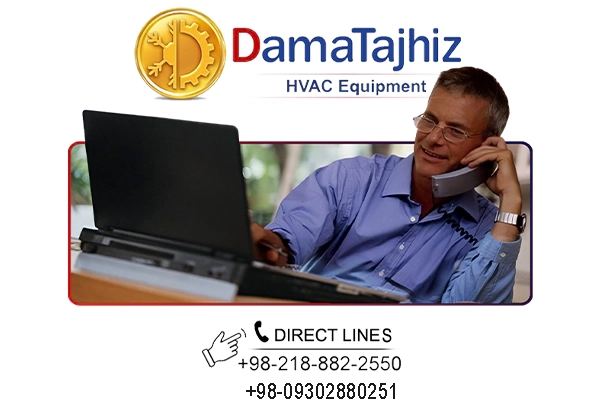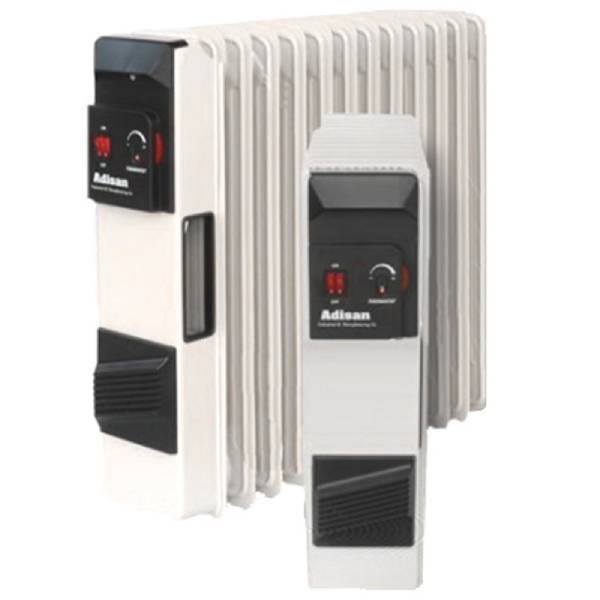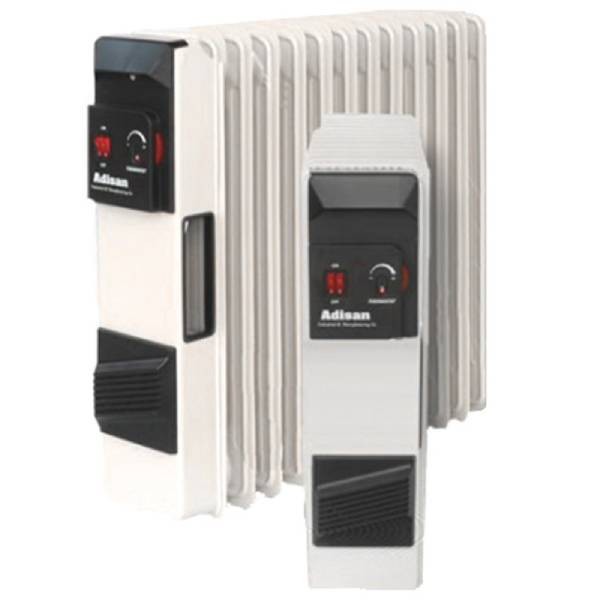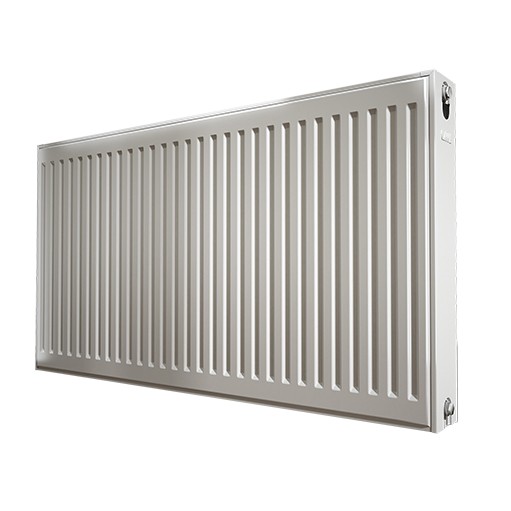Steel Radiator
Steel radiators have various types based on their shape and how they heat, each of which is used according to the characteristics and the conditions of the relevant environment. In the following, the capacity estimation method, the selection method, and the best purchase price of all types of steel radiators have been examined.
Steel Radiator Expert Buying Guide and Price List
One of the oldest methods of heating in apartments, houses, and office spaces is the use of steel radiators. It works in such a way that the heat of the steel radiators is distributed through heat transfer and displacement in the air.
After warming the air near the radiator fins, the warm air moves upwards, replacing the cold air. This continuous air displacement causes the room's air temperature to increase gradually. Of course, part of the heating of the radiators is also done by the radiation method.
The water in the panels of the radiator is heated in the central boiler of the building (engine room) using burners and boilers or using a combi boiler inside the unit and then directed to different parts of the building by the pump. After that, this hot water enters the radiator and transmits heat through radiation to the environment.
The most suitable places for installing and operating a radiator are places that do not require precise control of temperature and humidity, as radiators usually do not adjust the temperature and humidity of the environment and even reduce the room's relative humidity.
However, if you install a thermostatic valve, you gain the ability to adjust the ambient temperature in a good way, and not only that, you also save energy and relevant costs.
Note: Unlike aluminum radiators, steel and panel radiators are produced as an invisible block, which means the number of fins cannot be reduced or increased by the user.
Review, Selection, and Pricing of HVAC Equipment
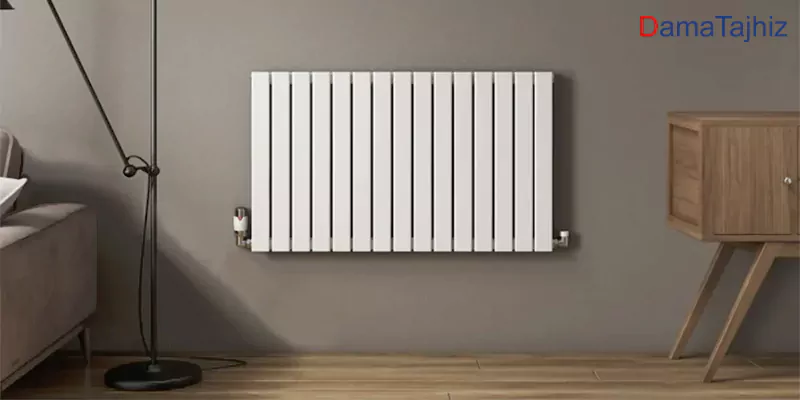
Types of Stainless Steel Radiators
The panel type of steel radiator is made of two pressed iron sheets with a thickness of 1/2 mm facing each other, with hot water flowing between them.
Flat steel radiators are produced as single convectors or as two convectors (with twice the width and more heating) in blocks of 50, 60, 80, 90, 100, 120, 140, 160, and 200 cm long.
The sectional type of steel radiator is made of an iron sheet with a thickness of 1.25 mm in different sizes; usually, radiators of sizes 200x600, 500x200, and 300x200 mm are among its types. The number 200 mm indicates the width of the sections, and the numbers 600, 500, and 300 are the distance from the bottom axis to the top of the steel radiator in millimeters.
Steel radiators can create a good thermal surface in a relatively small space because they are made in the form of sections.
DamaTajhiz: Thousands of products for thousands of projects (since 2004)
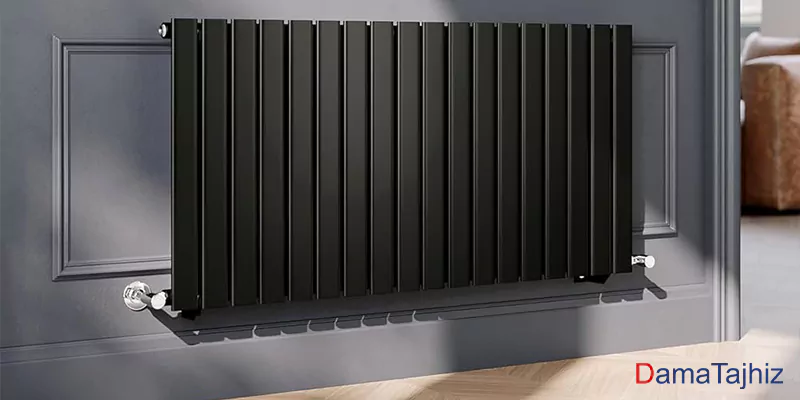
Flat/Panel Steel Radiators
Panel steel radiators are often made of steel, and today, their use has become popular in most European countries. The use of panel radiators is increasing due to their greater elegance, beauty, and more reasonable prices than other types of radiators.
Advantages of Panel Radiator
- More uniformity in providing ambient heating than sectional radiators
- The surface of the uniform and widespread radiation and the heat of the radiator more than the sectional radiator (the greater the share of radiation heating than convection heating, the more Suitable·)
- Integrated installation and good sealing
- Ability to be installed from both sides
- for most interior decoration designs
Disadvantages of Panel Radiator
- Due to the use of steel, it is possible to rust and pierce steel radiators in humid environments compared to a variety of aluminum radiators, especially in the long run.
- If the body of the panel stainless steel radiator is damaged and pierced, it is almost possible to repair it. (The entire panel should be replaced.)
- It is not possible to increase or decrease the length and thermal capacity of each block of steel and panel radiators. (In such cases, the heat capacity can be increased by branching from the radiator pipe and using a separate radiator panel.)
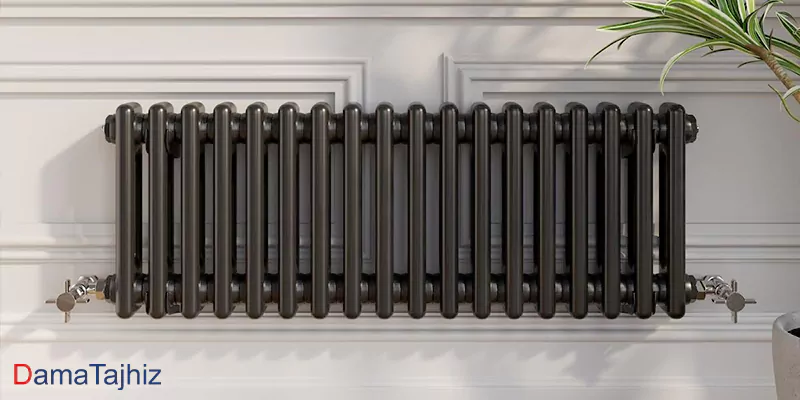
DamaTajhiz; Guide to Selection and Pricing of HVAC and Building Facilities Equipment (Since 2004)
Stainless Steel Radiator Production Process
The steel radiator production process does not require complex technical knowledge, and the production process of its conventional operations in the metal industries, including sheet stages (cutting, pressing, and forming), welding (resistive welding and oxyacetylene), coating, and quality control.
After that, it comprises the water test, and the main materials used are ST12 standard steel sheets with a thickness of 1.2 mm. Also, in the stage of painting steel radiators, a common gray color or electrostatic cream is usually chosen by the manufacturer or the customer.
Factors to Keep in Mind When Buying Steel Radiators
As usual, we emphasize the accurate calculation of the building's thermal loads by the software, and the confirmation of the engineer is required. To buy the most suitable steel radiator that will serve you for a long time. Here are the 4 tips you best keep in mind when buying a steel radiator:
- You need to install steel radiators at the cold spots of the building (under the windows and near the outer walls of the building) so the device can deal with the cold more efficiently.
- Today, the use of stainless steel radiators thermostatic valves instead of conventional ones is a completely intelligent and economical choice, and high fuel cost of up to 30 % (due to the heavy fuel costs), which will result in a lower gas bill as well as a significant impact on extending the life of the boiler.
- The use of an automatic bleeding valve makes it easy for the bleed and, in addition to providing complete heating of your home in the winter, reduces the risk of steel radiator leakage.
- Regular and timely bleeding is one of the most necessary maintenance of heating equipment. Note that the moral and regular bleeding of the heating system must be carefully performed every year when the circulator pump is turned off.
Stainless Steel Radiator Heating Capacity Calculation
To estimate the right heating capacity of a stainless steel radiator consider the following formula:
QT = [(U1 x A1 + ... + U1 x An) x ΔT + (V x 0.0749 x 0.24 x ΔT)] x 4
- QT: heating load (heating capacity) of steel radiators in kilocalories per hour.
- U1 to Un: the heat transfer coefficient of each of the surfaces between the inside and outside of the building in terms of Btu in / (h ft2 of), which should be determined based on the material of each of the walls using engineering reference tables.
- A1 to An: the area of each of the peripheral surfaces of the corresponding unit that transfers heat to the outside of the building. This area (in square feet) includes walls, windows, doors, and ceilings.
- ΔT: the temperature difference between the inside and outside of each unit under normal conditions, which is in °F.
- V: Total amount of air infiltrating through door or window seams (CFH) in ft3/hr
Constant factor 0.0749: air density in conventional conditions in the English unit system. Constant coefficient of 0.24 specific heat capacity of ambient air in conventional conditions in English units.
In the above formula, by calculating the values of all the parameters, you can get accurate results to determine the value of the steel radiator in each of the rooms.
Note: The exact values of U and area A for each of the surrounding surfaces must be considered based on specific details in each building and engineering tables of the heat transfer coefficient.
DamaTajhiz; The Best Prices and Brands of Ventilation, Heating, and Building Facilities Equipment (Since 2004)
Stainless Steel Radiator Installation Location
In winter, the steel radiator transfers heat to the room. However, the temperature of the room does not rise, and this temperature often remains constant. The reason is that the heat produced is lost through the walls and the penetration of outside cold air.
Heat loss occurs in two ways. One is the heat loss caused by the surrounding walls of the building, such as the roof, floor, wall, window, etc. The other is the heat loss caused by the penetration of cold air outside through the window seams.
In other words, whether we like it or not, thermal losses occur in buildings. Of course, we can use double-glazed UPVC windows and the use of radiator thermostatic valves; in addition to reducing the amount of heat loss, we can also be completely economical in energy consumption.
The height of steel radiators is 6 cm higher than the total height of each blade after installation on the base, and you might as well keep it in mind when doing your calculations so that the steel radiator height does not collide with the window above it.Pay attention to the overall dimensions of each panel or steel radiator block you choose according to its installation location in the unit so that the height of the steel radiator does not collide with the window above it and the length of the stainless steel radiator block does not collide with the electrical outlets.
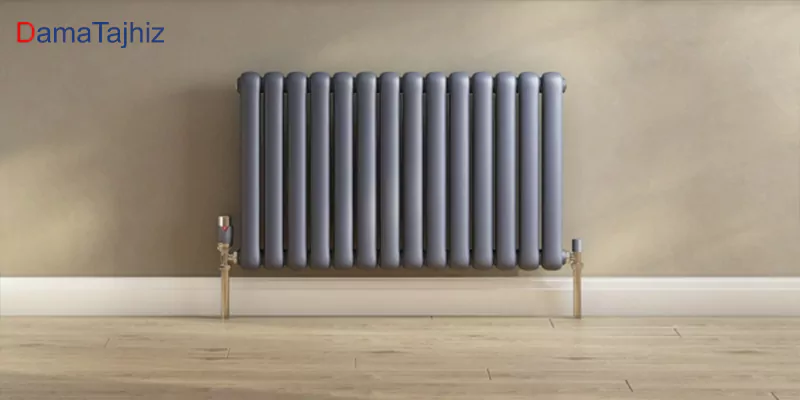
Stainless Steel Radiator Price
Feel free to browse and select the required steel radiator at the best price only on DamaTajhiz HVAC.
The price of steel, panel, and electric radiator varies based on the capacity, models, and brands available in the market; it should be noted that all prices are up-to-date with a generous discount already considered. Therefore, the best price for all steel, panel, and electric radiators is guaranteed for wholesale purchase.
Buying Stainless Steel Radiators
Due to the accumulation of hot air under the roof, the use of stainless steel radiators is only suitable for the floor to the ceiling of up to 3 meters. For spaces with higher ceilings, the use of other heating equipment, such as a fan coil, Heater, radiation heater, etc., is recommended.
Determine the required heating capacity before anything else in order to buy the right device. On the website of DamaTajhiz HVAC Group, technical information on dozens of steel, panel, and electric radiators from reputed brands, along with their eligible guarantee, has been provided for you to experience optimization and smart shopping.
Also note that in the specialized HVAC group of Damatajhiz, all the steel, panel, and electric radiators are only sold in bulk. Therefore, if you want to wholesale these products, contact us.

Dear Users
While thanking you for the trust you have in the technical opinions of Damatajhiz HVAC Group sales experts, it should be noted that the choice of the desired product brand based on history, brand strength, service, and product price is ultimately determined by the buyer.
But in Stainless Steel, Electric, and Flat Panel Radiators, most of the users and buyers of best-selling brands such as Iran Radiator, Butane, and Lorch are according to their quality, price, and after-sales service.
After reading the above material, you have more questions to decide on the type of Stainless Steel, Electric, and Flat Panel Radiators you need; you can contact the heating equipment and engine room department experts after contacting the DamaTajhiz HVAC Group and extension numbers 107-108-121-122. Get advice and ask your questions.

"Knowledge Fuels Better Choices"
Registered Trademark and Stewardship Business Licenses Issued by the Union of Virtual Business Association and the HVAC Equipment Industry.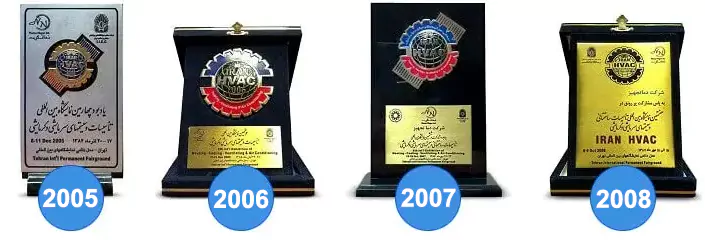
DamaTajhiz HVAC Participation at International HVAC and Construction Facilities Exhibitions Demonstrates its Global Reach and Commitment to the Industry.
We Look Forward to Your Call and the Opportunity to Meet With You
SHARE THIS CONTENT TO SPREAD THE KNOWLEDGE
| |
Head Office: No. 463,Talebian Alley,Taleghani St.Tehran,Iran


DamaTajhiz has provided the opportunity to sell and ship specialized HVAC equipment for applicants in the following countries as the first and the most popular online store for selling HVAC equipment (Heating , Ventilation , Cooling , Air conditioning) in the Middle East : Afghanistan – Tajikistan - Uzbekistan – Turkmenistan – Azerbaijan – Armenia – Georgia – Turkey – Iraq – Syria – Jordan – Kuwait – Emirates – Qatar – Oman.
